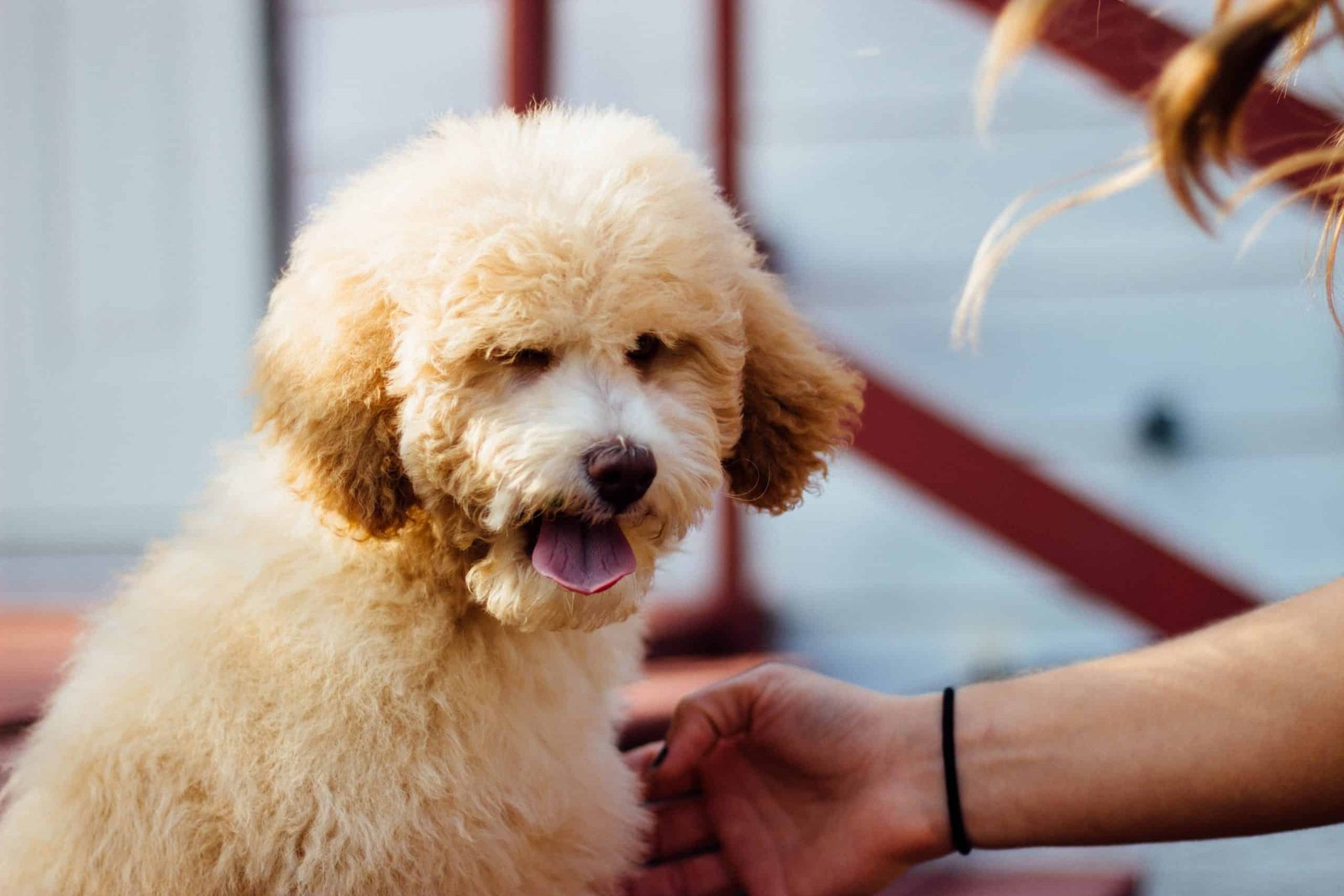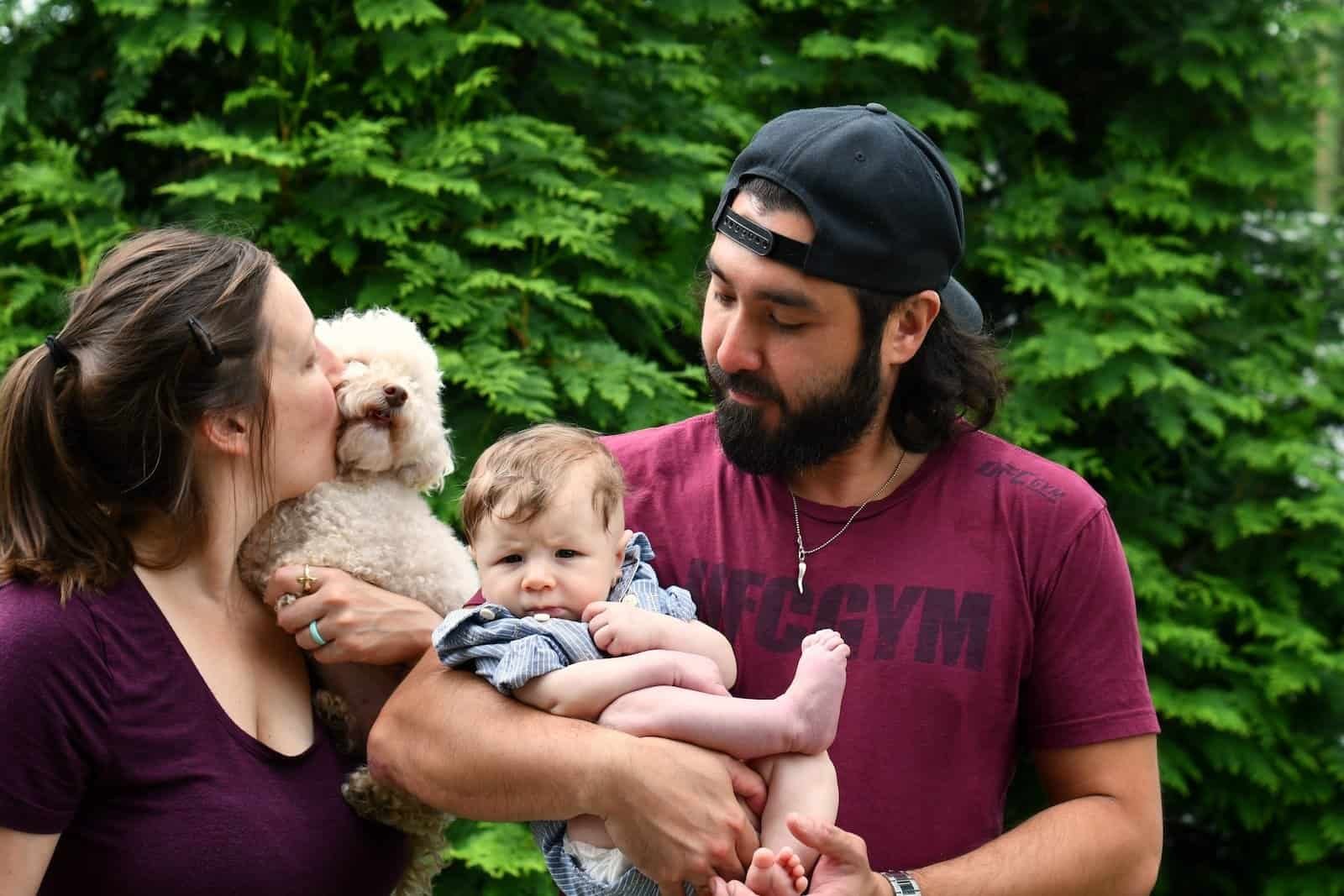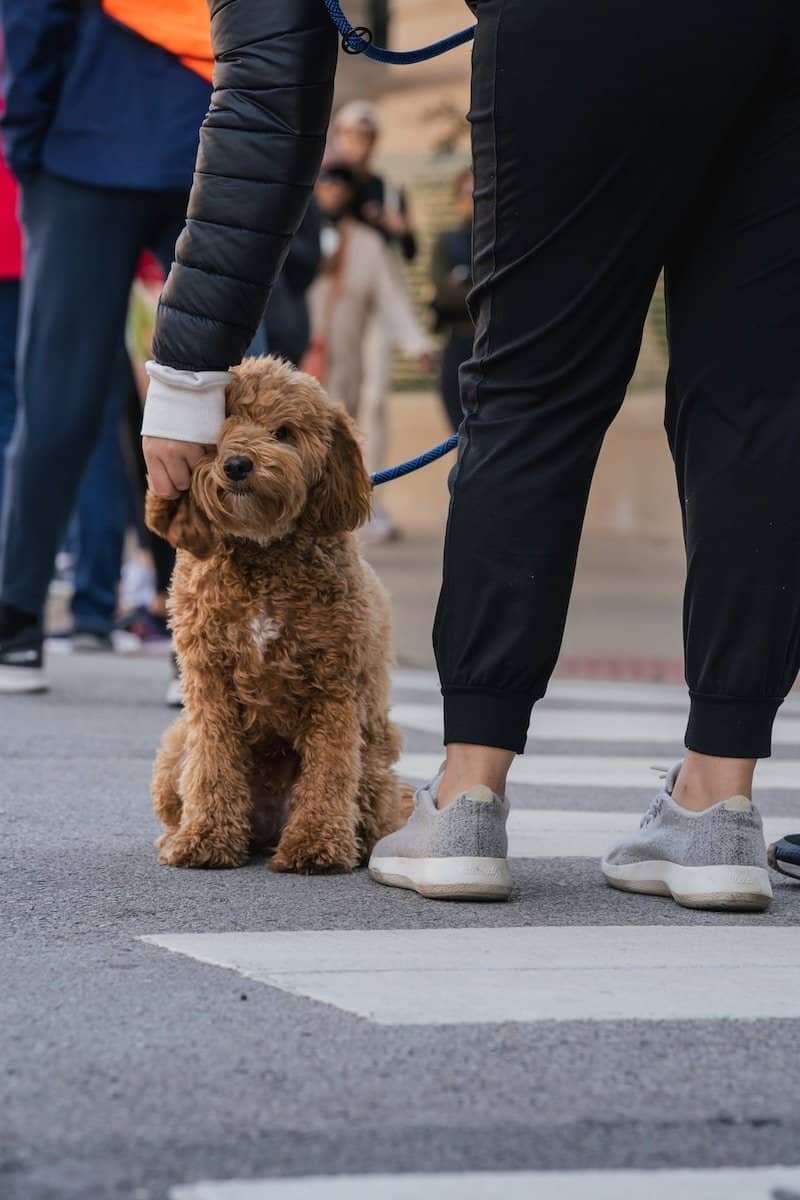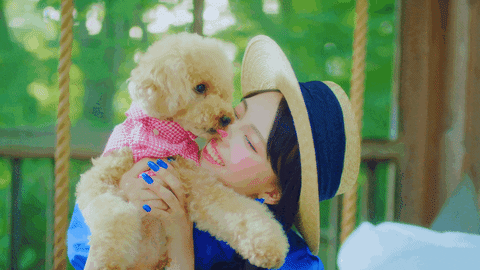
When it comes to leash training your poodle, it’s important to remember that every dog is unique and may require different strategies to learn. However, there are some basic principles that can help make the process smoother for both you and your furry friend. By understanding poodle behavior, choosing the right training tools, implementing positive reinforcement, and addressing common challenges, you can help your poodle become a well-behaved and happy walking companion.
Expert Reviewed: This guide is informed by veterinary research and professional dog training methodologies. We regularly update our content based on the latest canine behavior studies.
Before beginning leash training, it’s important to take some time to prepare. This includes ensuring that your poodle is up-to-date on vaccinations and has a properly fitting collar or harness. You may also want to consider using a head halter or front-hook harness if your dog tends to pull on the leash. Additionally, it’s helpful to choose a quiet and familiar location for training sessions to minimize distractions. With the right preparation, you can set your poodle up for success and make the training process more enjoyable for both of you.
Key Takeaways
- Understanding poodle behavior and choosing the right training tools can make leash training easier.
- Positive reinforcement is an effective way to encourage good behavior and address common challenges.
- Consistent training sessions and patience are key to successfully leash training your poodle.
About This Guide
- Real Experience: Written by poodle enthusiasts with years of hands-on experience caring for and training poodles.
- Expert Reviewed: Content verified by certified dog trainers and veterinary professionals.
- Fact-Checked: Information sourced from the AKC, veterinary journals, and breed specialists.
- Last Updated: November 2025
Understanding Poodle Behavior
Before you start leash training your poodle, it is important to understand their behavior. Poodles are intelligent and active dogs that belong to the herding breed group. This means that they have a strong instinct to herd and move things around, which can sometimes result in them pulling on the leash.
Poodles also require mental stimulation to prevent boredom, fear, and anxiety. Without proper mental stimulation, your poodle may become restless and prone to anxiety, which can make leash training difficult. Providing your poodle with enough attention, exercise, and mental stimulation can help make leash training more successful.
Additionally, poodles have a relatively short attention span, especially when they are puppies. It is important to keep training sessions short and engaging to maintain their attention and prevent them from becoming bored or distracted.
Overall, understanding your poodle’s behavior is crucial to successful leash training. By providing them with enough mental stimulation, attention, and exercise, you can help prevent fear and anxiety, and make training sessions more effective.
Preparation for Leash Training
Before you start leash training your poodle, it’s important to make sure you have the right equipment and that your pet is ready for the training. Here are a few things you should do to prepare for leash training:
Get the Right Equipment
You’ll need a few things to properly leash train your poodle. These include a flat collar, a harness, a head halter, or a front-hook harness. A flat collar is the most basic option, but it’s not always the best choice for every dog. If your poodle tends to pull on the leash, a head halter or front-hook harness might be a better option. These types of equipment can help you control your dog’s movements and prevent them from pulling on the leash.
Introduce the Equipment
Before you start leash training, you should introduce your poodle to the equipment you’ll be using. This will help your pet get used to the feel of the collar or harness and prevent them from becoming scared or anxious when you put it on. Start by letting your pet sniff and inspect the equipment. Then, put it on for short periods of time, gradually increasing the length of time your pet wears it.
Start with Basic Commands
Before you start leash training, your poodle should be comfortable with basic commands like “sit,” “stay,” and “come.” These commands will come in handy during leash training, as you’ll need to be able to control your pet’s movements and get them to follow your lead. If your poodle isn’t familiar with these commands, start working on them before you begin leash training.
Choose the Right Leash
There are many different types of leashes available, so it’s important to choose the right one for your poodle. A standard leash is a good choice for most dogs, but if your poodle tends to pull, a retractable leash might be a better option. Retractable leashes can give your pet more freedom to explore while still allowing you to maintain control.
Make Sure Your Poodle is Ready
Before you start leash training, make sure your poodle is ready for the training. This means that your pet should be at least 8 to 12 weeks old and should be in good health. If your poodle has any health problems, consult with your vet before starting leash training. Additionally, make sure your pet is comfortable around people and other dogs, as this will make the training process easier.
By following these steps, you’ll be well prepared to start leash training your poodle. With the right equipment, basic commands, and a little patience, you can help your pet learn to walk on a leash like a pro.
Choosing the Right Training Tools
Proper leash training for your poodle requires the right tools. Choosing the right training tools can make a significant difference in how quickly and effectively your poodle learns to walk on a leash. Here are some essential tools to consider when training your poodle:
Leash
The leash is the most important tool for leash training. Choose a leash that is sturdy and comfortable to hold. A leash that is too short can restrict your poodle’s movement, while a leash that is too long can make it difficult to control your poodle. A standard leash length of 4-6 feet is ideal for most poodles.
Harness
A harness is a great alternative to a collar. It can prevent your poodle from choking or injuring their neck while walking on a leash. Consider a front-hook harness that discourages pulling. A harness that fits well and is comfortable for your poodle is essential.
Head Halter
A head halter is another effective tool for leash training. It works by gently guiding your poodle’s head and redirecting their attention. A head halter can be especially useful for poodles who are strong pullers. However, it’s important to introduce the head halter gradually and ensure that it fits properly.
Treats
Treats are an important part of positive reinforcement training. Use tasty treats to reward your poodle for good behavior while walking on a leash. Treats should be small and easy to carry. Avoid treats that are high in calories or have a strong odor that can distract your poodle.
Toy
A toy can be a useful tool for leash training. It can help keep your poodle’s attention focused on you and not on other distractions. Choose a toy that is easy to carry and won’t distract your poodle too much.
Clicker
A clicker is a useful tool for positive reinforcement training. It can help reinforce good behavior and signal to your poodle that they are doing something right. However, it’s important to introduce the clicker gradually and ensure that your poodle is comfortable with the sound.
Collar
A collar is an essential tool for leash training. Choose a collar that fits well and is comfortable for your poodle. A collar that is too tight can be uncomfortable, while a collar that is too loose can slip off. A collar with a buckle or snap closure is easy to put on and take off.
By choosing the right training tools, you can make leash training a positive and rewarding experience for both you and your poodle.
Basic Commands and Leash Training
When it comes to leash training your poodle, basic commands are essential. These commands not only help with leash training but also establish a foundation for obedience training. The most basic commands are “sit,” “stay,” “come,” and “heel.”
To start leash training, begin with loose-leash walking. This means that your poodle should walk beside you with a slack leash. If your poodle pulls on the leash, stop walking and wait until they come back to your side. Once they do, continue walking. Repeat this until your poodle learns to walk beside you without pulling.
When teaching your poodle to heel, use a cue word or phrase such as “heel” or “let’s go.” Begin by walking with your poodle on your left side, with the leash held in your right hand. Hold a treat in your left hand and keep it near your left hip. As you walk, say the cue word and lure your poodle with the treat to your left side. When they are in the correct position, reward them with the treat.
Once your poodle has mastered loose-leash walking and heeling, you can start taking them on longer leash walks. During these walks, continue to reinforce the basic commands and use them as needed.
It’s important to remember that leash training takes time and patience. Consistency is key, so make sure to practice regularly. With time and practice, your poodle will become a well-behaved walking companion.
Implementing Positive Reinforcement
When it comes to leash training your poodle, it’s important to use positive reinforcement to encourage good behavior. Positive reinforcement involves rewarding your dog for desirable actions, such as walking calmly on the leash or responding to commands. This method is effective because it helps your poodle associate good behavior with positive outcomes, making them more likely to repeat the behavior in the future.
One of the most effective ways to implement positive reinforcement is through the use of treats. Tasty treats, such as small pieces of cooked chicken or cheese, can be used to reward your poodle for good behavior. When your dog responds correctly to a command or walks calmly on the leash, immediately offer a treat and verbal praise, such as “good boy” or “good girl.” This combination of praise and reward will help your poodle understand what behavior you expect from them.
Consistency is key when using positive reinforcement. Make sure to reward your poodle every time they exhibit good behavior. This will help them understand that good behavior is always rewarded. Additionally, be sure to use verbal praise in conjunction with treats to reinforce the desired behavior.
It’s important to note that positive reinforcement doesn’t just involve treats. Verbal praise, such as “good job” or “well done,” can be just as effective in reinforcing good behavior. Additionally, playtime and other rewards, such as a favorite toy, can be used to reinforce good behavior.
Remember, positive reinforcement is about rewarding good behavior, not punishing bad behavior. Avoid scolding or punishing your poodle for undesirable behavior. Instead, redirect their attention to a desirable behavior and reward them for exhibiting that behavior.
In summary, implementing positive reinforcement is an essential component of effective leash training for your poodle. Use treats, verbal praise, and other rewards to reinforce good behavior consistently. With patience and consistency, your poodle will quickly learn what behavior is expected of them and will be eager to please you.
Dealing with Distractions and Pulling
Leash training your poodle can be a challenging task, especially when you encounter distractions and pulling. However, with patience and consistency, you can help your furry friend overcome these obstacles and become a well-behaved walker.
Distractions
Distractions are everywhere, from squirrels to other dogs, and they can be a major challenge for your poodle. To train your poodle to ignore distractions, start by using positive reinforcement techniques. For example, reward your poodle with a treat or praise when they focus on you instead of the distraction.
Another effective way to train your poodle to ignore distractions is to gradually expose them to the distractions. For instance, start by introducing your poodle to the distraction from a distance and then gradually move closer as they become more comfortable. This way, your poodle will learn to stay focused on you even when there are distractions around.
Pulling
Pulling is a common problem when leash training your poodle. To prevent pulling, start by teaching your poodle to walk on a loose leash. Use positive reinforcement techniques such as treats and praise to reward your poodle for walking calmly by your side.
If your poodle starts to pull, stop walking and wait for them to come back to you. Once your poodle has put slack in the leash, continue walking. This technique, known as the “be a tree” method, will teach your poodle that pulling will not get them where they want to go.
Lunging
Lunging is a more severe form of pulling that can be dangerous for both you and your poodle. To prevent lunging, start by identifying the triggers that cause your poodle to lunge. For instance, your poodle may lunge at other dogs or people.
Once you have identified the triggers, gradually expose your poodle to them from a safe distance. Use positive reinforcement techniques to reward your poodle for staying calm and focused. Over time, your poodle will learn to remain calm even in the presence of triggers.
In conclusion, leash training your poodle requires patience, consistency, and positive reinforcement techniques. By following these tips, you can help your furry friend overcome distractions, pulling, and lunging and become a well-behaved walker.
Consistent Training Sessions
Consistency is key when it comes to leash training your poodle. Daily training sessions, even if they are short, are much more effective than sporadic, longer sessions. It’s important to keep in mind that every dog is different, and some may require more time and patience than others. Don’t get discouraged if your poodle doesn’t seem to be making progress as quickly as you’d like.
During each training session, focus on one behavior or command at a time. Start with simple commands like “sit” or “stay” and gradually work up to more complex behaviors like loose leash walking. Remember to use positive reinforcement by rewarding your poodle with treats or praise when they exhibit the desired behavior.
It’s important to be patient and persevere through the training process. Your poodle may not learn a new behavior overnight, but with consistent training sessions, they will eventually get there.
To ensure that your poodle is learning effectively, it’s important to be consistent with your commands and training methods. Use the same commands and gestures each time you want your poodle to perform a behavior, and be consistent with the rewards you give. This will help your poodle understand what is expected of them and will make the training process more efficient.
In summary, consistent training sessions are crucial when it comes to leash training your poodle. Daily, short sessions focusing on one behavior or command at a time, positive reinforcement, patience, and perseverance are all key components of effective training. Remember to be consistent with your commands and training methods to ensure that your poodle is learning effectively.
Addressing Common Challenges
Leash training your poodle can be a challenging experience, but it is essential for their safety and well-being. It is common to encounter some challenges during the training process, which can lead to frustration, barking, fear, and anxiety in both you and your furry friend. However, with patience, consistency, and the right techniques, you can overcome these challenges and successfully leash train your poodle.
Pulling on the Leash
One of the most common challenges when it comes to leash training is dealing with a poodle that pulls on the leash. This can be frustrating and can make walks less enjoyable for both you and your dog. To address this issue, try the following techniques:
- Stop and Go:When your poodle pulls on the leash, stop walking and wait until they come back to your side. Once they are walking calmly, continue walking. Repeat this process until your poodle learns to walk calmly by your side.
- Change Direction:If your poodle pulls on the leash, change direction abruptly. This will get their attention and encourage them to walk by your side.
- Use Positive Reinforcement:Reward your poodle with treats and praise when they walk calmly by your side. This will encourage them to continue the behavior.
Fear and Anxiety
Some poodles may be fearful or anxious when it comes to leash training. This can be due to a variety of reasons, such as past trauma or lack of socialization. To address this issue, try the following techniques:
- Start Slowly:Start by introducing your poodle to the leash and collar in a calm, quiet environment. Let them sniff and explore the leash and collar before putting it on them.
- Positive Association:Associate the leash and collar with positive experiences, such as treats or playtime. This will help your poodle associate the leash and collar with positive feelings.
- Desensitization:Gradually expose your poodle to different environments and situations while on the leash. This will help them become more comfortable and confident with leash training.
Barking
Some poodles may bark excessively during leash training, which can be disruptive and distracting. To address this issue, try the following techniques:
- Ignore the Behavior:If your poodle barks during leash training, ignore the behavior and continue walking. Do not give them attention or treats until they stop barking.
- Positive Reinforcement:Reward your poodle with treats and praise when they walk calmly by your side without barking. This will encourage them to continue the behavior.
- Distraction:Distract your poodle with a toy or treat when they start to bark. This will redirect their attention and discourage the barking behavior.
In conclusion, leash training your poodle may present some challenges, but with patience, consistency, and the right techniques, you can overcome these challenges and successfully train your furry friend. Remember to use positive reinforcement and to start slowly, and most importantly, enjoy the process of bonding with your poodle during walks.
Potty and Crate Training
Potty training your poodle is an essential part of leash training. It is important to establish a bathroom schedule for your puppy and stick to it consistently. Young puppies, especially those under three months, should go outside to pee every one or two hours. Before 12 weeks, puppies are still developing the muscles they need to hold their urine and feces. Take your puppy outside to a grassy area and give them a command to eliminate, such as “go potty” or “do your business.” Once they eliminate, give them a treat and praise them. This positive reinforcement will encourage them to eliminate outside and associate it with good behavior.
If you are unable to take your puppy outside, you can use pee pads as an alternative. However, it is important to note that using pee pads can prolong the potty training process as it can confuse your puppy on where it is acceptable to eliminate. It is best to use pee pads only when necessary, such as during inclement weather or if you live in an apartment without easy access to a grassy area.
Crate training can also be an effective tool for potty training your poodle. Dogs naturally do not like to eliminate in their sleeping area, so crate training can teach them to hold their bladder and bowels until they are taken outside. When crate training, it is important to choose the right size crate for your puppy. The crate should be large enough for them to stand up, turn around, and lie down comfortably, but not so large that they have enough space to eliminate in one corner and sleep in another.
It is important to note that crate training should not be used as a punishment. Your puppy should associate the crate with positive experiences, such as treats and toys. Gradually increase the amount of time your puppy spends in the crate, starting with short intervals and gradually increasing the duration. Do not leave your puppy in the crate for extended periods of time, as this can lead to anxiety and behavioral issues.
In summary, establishing a consistent bathroom schedule and using positive reinforcement are key to potty training your poodle. Crate training can also be an effective tool, but it should be used in a positive and gradual manner. Remember to be patient and consistent, and your poodle will be leash trained in no time.
Bonding and Motivation
Leash training your poodle is an excellent opportunity to bond with your pet and establish trust. It is important to remember that your pet is not just a tool for exercise, but a companion who is eager to please you. By taking the time to bond with your pet, you will create a stronger relationship that will make training much easier.
Motivation is key to successful leash training. Positive reinforcement is the most effective way to motivate your pet and encourage good behavior. Rewards such as treats, praise, and playtime will show your pet that they are doing well and encourage them to continue their good behavior.
It is important to be patient and consistent with your pet during training. Dogs are creatures of habit and thrive on routine, so it is important to establish a regular training schedule. Consistency in training will help your pet understand what is expected of them and make training much easier.
In addition to training, spending time with your pet and engaging them in activities such as playing fetch or teaching them new tricks will also help to establish a strong bond. This will also help to keep your pet mentally and physically stimulated, which is important for their overall health and well-being.
As a dog owner, it is important to remember that your pet is not just a pet, but a member of your family. By taking the time to bond with your pet and establish trust, you will create a stronger relationship that will make training much easier. Remember to always be patient, consistent, and positive in your training, and you will have a well-trained and happy poodle.
Frequently Asked Questions
If you’re new to poodle ownership, you may have some questions about leash training. Here are some frequently asked questions and their answers to help guide you through the process.
What is the best leash for training a dog not to pull?
When it comes to leash training, it’s important to choose the right equipment. A front-clip harness or head halter can be effective tools for discouraging pulling. These types of harnesses discourage pulling by redirecting your dog’s attention and preventing them from getting leverage to pull. A standard leash works well with these types of harnesses.
How long does it take to leash train a puppy?
The time it takes to leash train a puppy can vary depending on the dog’s age, temperament, and previous experiences. It can take anywhere from a few days to several weeks to teach a puppy to walk on a leash without pulling. Consistency and patience are key.
How do you train a poodle to walk on a leash beside you?
To train your poodle to walk on a leash beside you, start by teaching them to walk on a loose leash. Use treats and praise to reward them for walking calmly beside you. If your poodle starts to pull, stop walking and wait for them to calm down before continuing. Over time, your poodle will learn that walking calmly beside you is rewarding.
What age should you start leash training a puppy?
It’s a good idea to start leash training your puppy as early as possible. Puppies can start learning basic commands as early as 8 weeks old. However, it’s important to wait until your puppy has had all of their vaccinations before taking them outside for walks.
How can I stop my poodle from pulling on the leash?
To stop your poodle from pulling on the leash, try using a front-clip harness or head halter. These types of harnesses discourage pulling by redirecting your dog’s attention and preventing them from getting leverage to pull. It’s also important to be consistent with your training and reward your poodle for walking calmly beside you.
What are some tips for loose leash training?
Loose leash training can take time, but there are some tips that can help make the process easier. Start by using treats and praise to reward your poodle for walking calmly beside you. If your poodle starts to pull, stop walking and wait for them to calm down before continuing. Be consistent with your training and keep your training sessions short and positive.
When it comes to leash training, it’s important to choose the right equipment. A front-clip harness or head halter can be effective tools for discouraging pulling. These types of harnesses discourage pulling by redirecting your dog’s attention and preventing them from getting leverage to pull. A standard leash works well with these types of harnesses.
How long does it take to leash train a puppy?
The time it takes to leash train a puppy can vary depending on the dog’s age, temperament, and previous experiences. It can take anywhere from a few days to several weeks to teach a puppy to walk on a leash without pulling. Consistency and patience are key.
How do you train a poodle to walk on a leash beside you?
To train your poodle to walk on a leash beside you, start by teaching them to walk on a loose leash. Use treats and praise to reward them for walking calmly beside you. If your poodle starts to pull, stop walking and wait for them to calm down before continuing. Over time, your poodle will learn that walking calmly beside you is rewarding.
What age should you start leash training a puppy?
It’s a good idea to start leash training your puppy as early as possible. Puppies can start learning basic commands as early as 8 weeks old. However, it’s important to wait until your puppy has had all of their vaccinations before taking them outside for walks.
How can I stop my poodle from pulling on the leash?
To stop your poodle from pulling on the leash, try using a front-clip harness or head halter. These types of harnesses discourage pulling by redirecting your dog’s attention and preventing them from getting leverage to pull. It’s also important to be consistent with your training and reward your poodle for walking calmly beside you.
What are some tips for loose leash training?
Loose leash training can take time, but there are some tips that can help make the process easier. Start by using treats and praise to reward your poodle for walking calmly beside you. If your poodle starts to pull, stop walking and wait for them to calm down before continuing. Be consistent with your training and keep your training sessions short and positive.
Frequently Asked Questions
What should I know before getting started?
Every poodle is unique, so patience and consistency are key. Start slowly and adjust based on your dog’s response.
How long does this typically take?
Results vary, but most owners see progress within 2-4 weeks of consistent effort.






